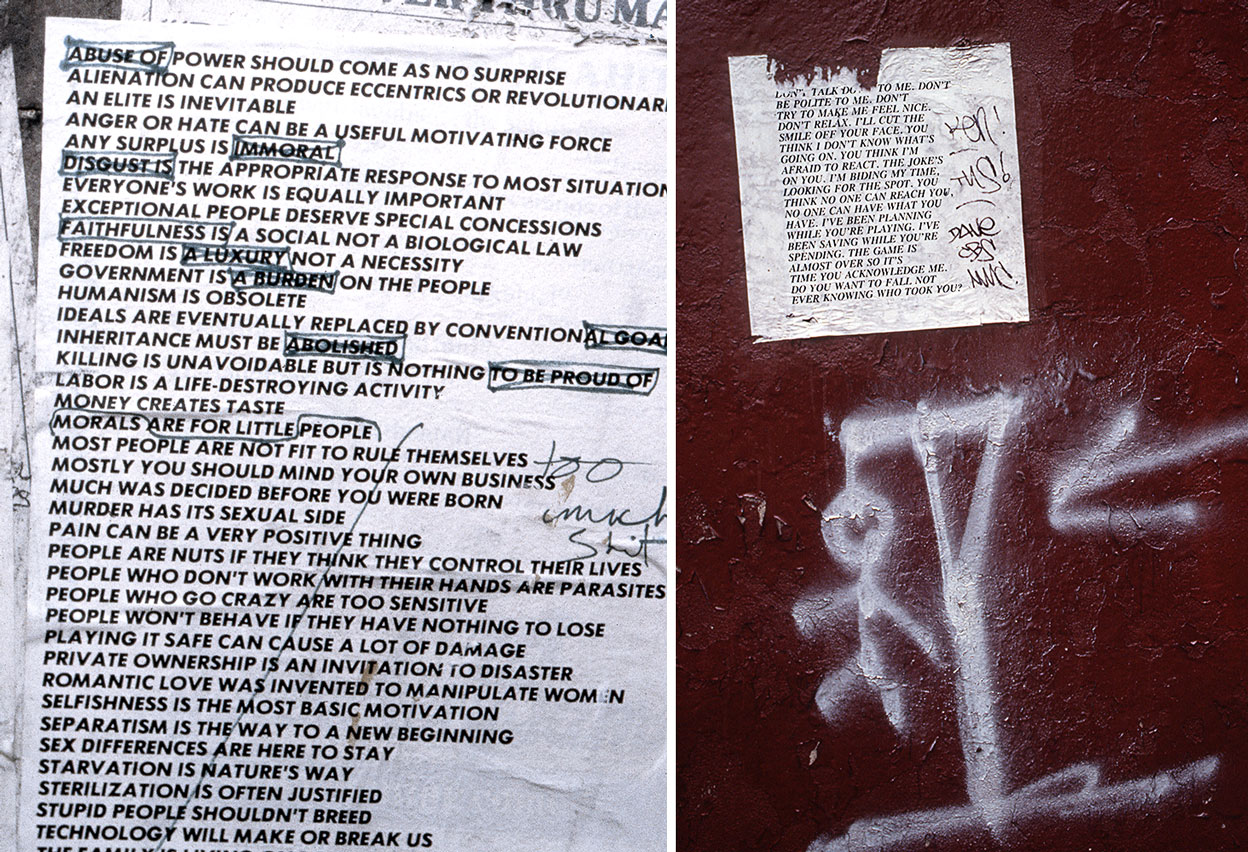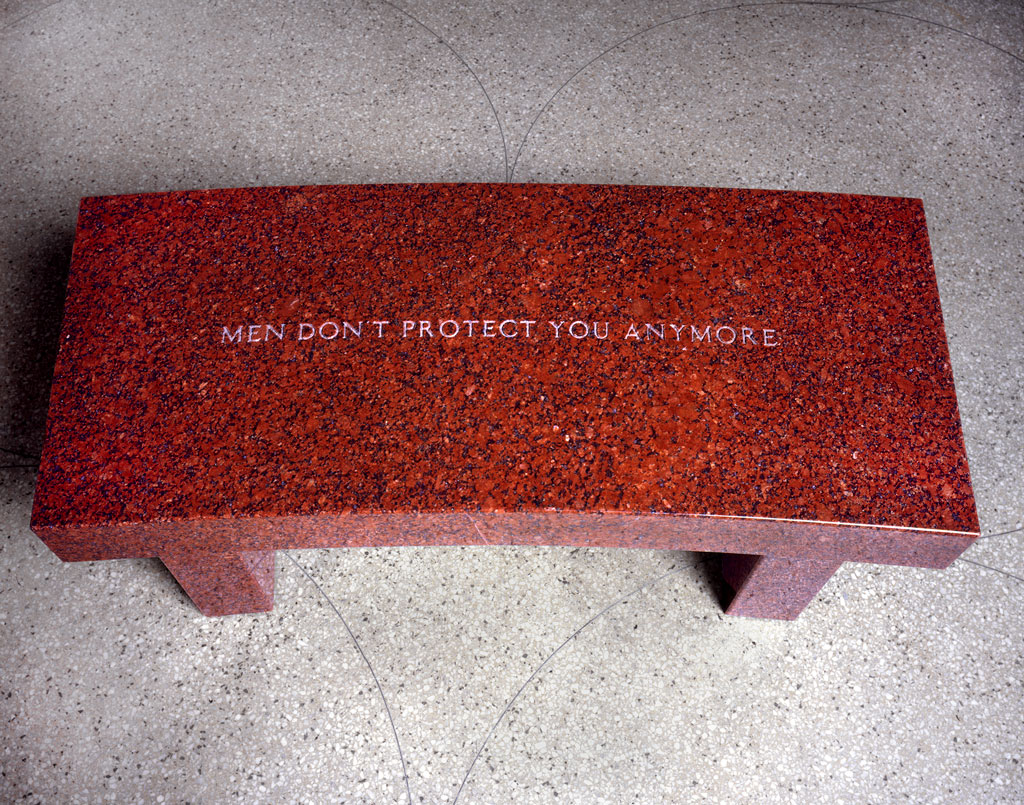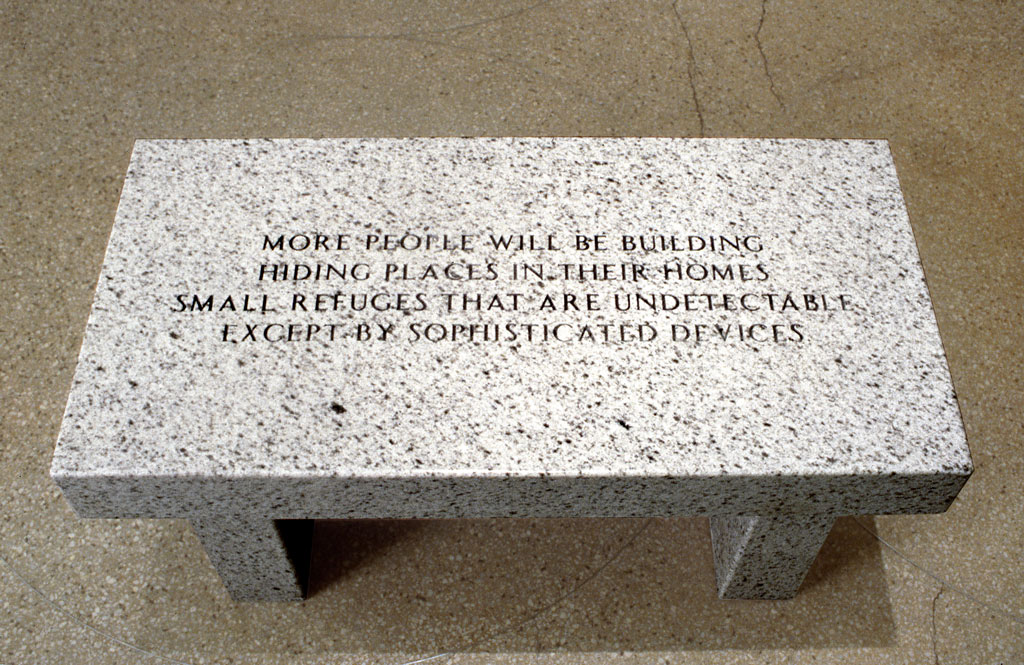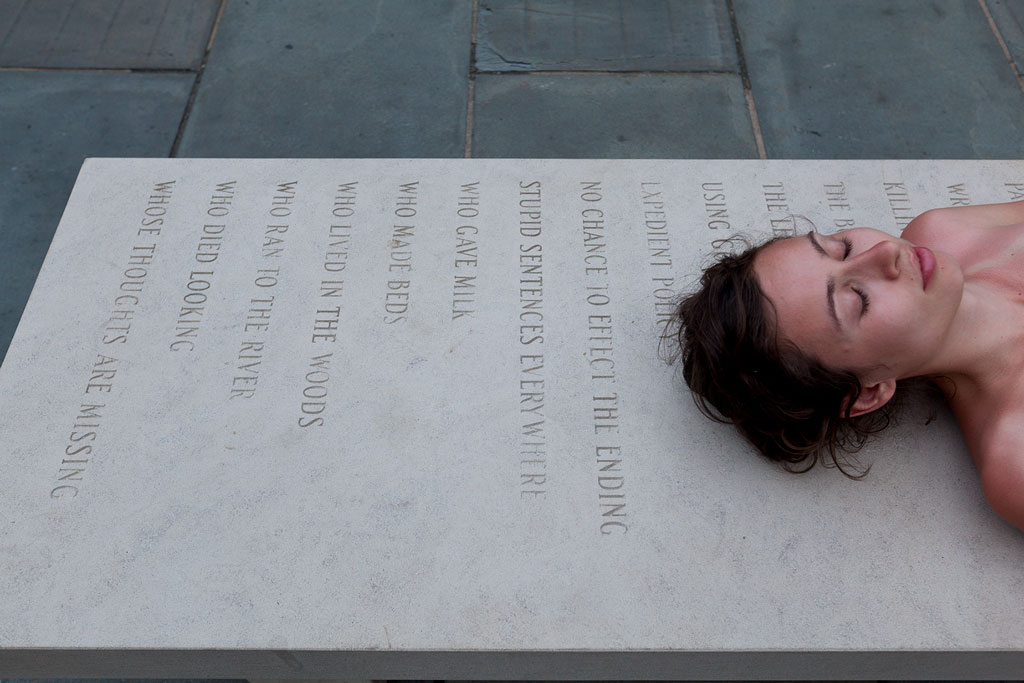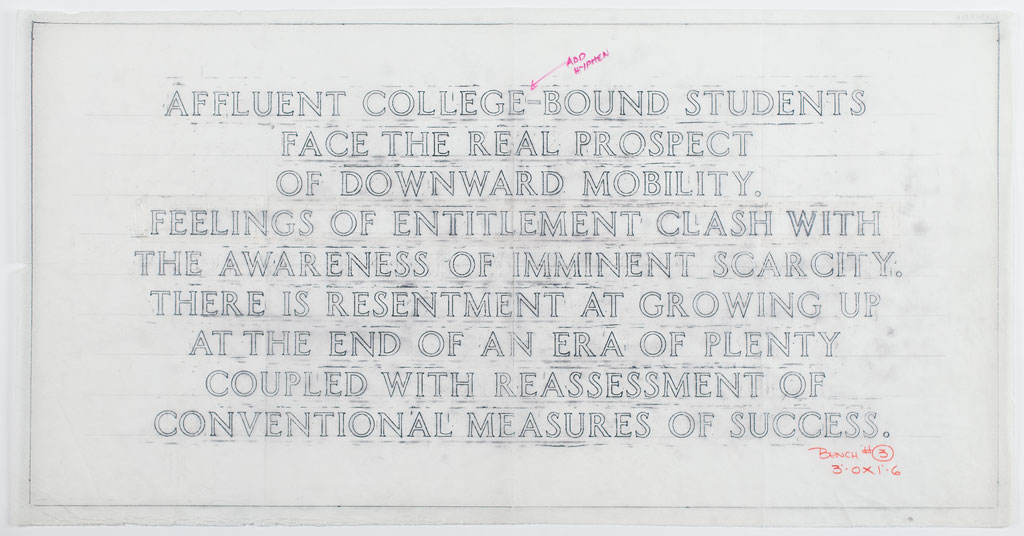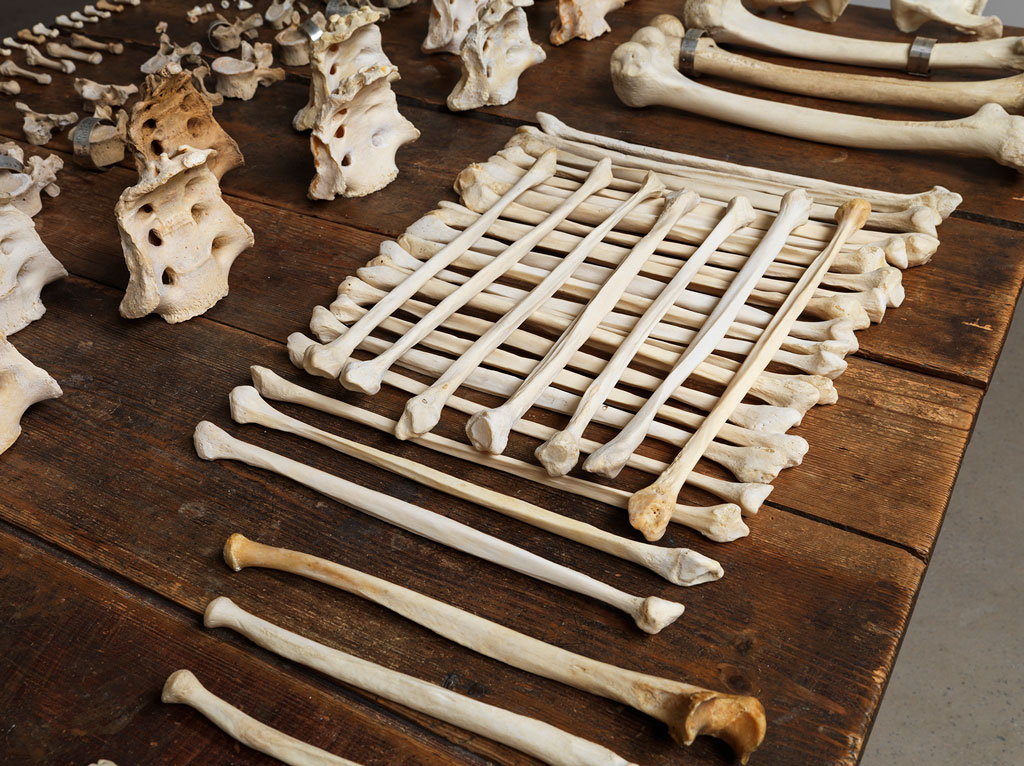ART-PREVIEW: Jenny Holzer-Thing Indescribable
 A political activist as well as an artist, Jenny Holzer’s aim is to disrupt the passive reception of information from damaging sources. With remarkable boldness and a critical sense, Jenny Holzer addresses social issues which often entail profound questions, resorting even to humor to facilitate the interpretation of messages which, at times, can be extremely harsh.
A political activist as well as an artist, Jenny Holzer’s aim is to disrupt the passive reception of information from damaging sources. With remarkable boldness and a critical sense, Jenny Holzer addresses social issues which often entail profound questions, resorting even to humor to facilitate the interpretation of messages which, at times, can be extremely harsh.
By Dimitris Lempesis
Photo: Guggenheim Museum Bilbao Archive
The exhibition “Jenny Holzer. Thing Indescribable” focuses on one of the most important conceptual artists on the international scene. Holzer’s work merges concepts and words in an output that questions not only reality but also the messages we receive on this reality in which we live. The exhibition pays tribute to Holzer’s career, from her start in the mid-1970s, when her art sprang up on the streets of New York, surprising pedestrians with her “Truisms” through four decades of her career, in which art, poetry, politics, and recent history converge in extraordinary, intellectually profound works boasting an exceptional artistic dimension. Holzer’s “Truisms” , comprising a list of over 250 single-sentence declarations, were written between 1977 and 1979. Resembling existing aphorisms, maxims, and clichés, they bring together a wide range of conflicting theoretical, philosophical, and political positions. Arranged in alphabetical order, the “Truisms” were first shown on anonymous street posters pasted throughout downtown Manhattan and have since appeared on T-shirts, hats, electronic signs, stone floors, and benches. The “Inflammatory Essays” (1979–82), also on display, were first printed on colored paper and, like the “Truisms”, pasted throughout the public spaces of New York City. This series was influenced by the artist’s reading of political, artistic, religious, and other manifestos, and as originally printed in English, each text consisted of 100 words on 20 lines. As in any manifesto, the voice in each essay espouses a strong and specific ideology or point of view, taking a particularly urgent tone. With this series, Holzer invites the reader to consider the necessity of social change, propaganda’s potential to manipulate the public, and the conditions that attend revolution. Also, on show are two stone sarcophagi (one made from red Ankara marble and the other from Nubian black granite) feature sections of Holzer’s text “Laments” (1989). Written at the height of the AIDS epidemic, “Laments” chronicles unnecessary death in the first-person voices of unknown and unnamed speakers, including women, men, children, and an infant. A third, more recent sarcophagus made from Breccia Medicea marble features an excerpt from Anna Świrszczyńska’s poem “Still Life,” a devastating record of the brutality of war, pointing to the continuity of Holzer’s concerns and material over the years even as her practice has expanded to include the words of others. Another Gallery includes six stone benches, a selection of process drawings executed on tracing paper, a range of hand-painted metal signs, and three electronic signs. The black granite benches in this room represent Holzer’s first work in stone. The text “Under a Rock” (1986), explores the effects of politics on the human body and the manifestations and persistence of pain in an attempt to approach the unsayable. “Under a Rock” was written with stone benches as well as LEDs in mind, and addresses Holzer’s desire to explore the differences between reading fleeting electronic text and tracing one’s hand across letters cut in stone. To produce benches like these before the process became digital, Holzer prepared a drawing in graphite on vellum tracing paper. In these drawings, many of which are displayed in the gallery, the text is laid out carefully before being transferred to the stone surface of the bench, where it is inscribed by master craftspeople. More fragile and ephemeral-looking than the benches, the drawings have their own unique, sometimes eerie beauty when presented as works in their own right. The electronic signs include selections from two of Holzer’s best-known text series: “Living” (1980–82), which presents a set of quiet observations, directions, and warnings, and “Survival” (1983–85), a series that questions the ways individuals respond to their political, social, physical, psychological, and personal environments. Unlike the “Inflammatory Essays”, the “Living” texts are written in a matter-of-fact, journalistic style suited to descriptions of everyday life. They comment on how the individual negotiates landscapes, persons, rules, expectations, desires, fears, other bodies, and the self. “Survival” was the first of Holzer’s texts to be written especially for electronic signs. Originally displayed on large electronic billboards in Times Square and other urban centers, the sentences are short and pointed so as to be easily accessible to passersby. Their tone is more urgent. Perhaps the best-known statement from the series is “PROTECT ME FROM WHAT I WANT”. Another gallery presents a new robotic LED work, “THERE WAS A WAR”. A site-specific installation of stone benches, a few upended, circles the LED in a display of chaos and destruction. “THERE WAS A WAR” is a four-sided vertical LED sign that swings from a robotic assembly suspended from the gallery’s recessed ceiling. For this work, Holzer sought out information on the international refugee crisis and the devastating humanitarian consequences of Syria’s ongoing civil war, including 131 individual eyewitness accounts collected between 2011 and 2016 by the organizations Human Rights Watch and Save the Children. Interviews with civilian protesters arrested, detained, and tortured by the Assad regime, and with defectors from the Syrian military and intelligence agencies offer insight into the unfulfilled promise of Syria’s Arab Spring. The room entitled “sexual violence” houses another new robotized LED installation, ”I WOKE UP NAKED”, displaying first-person testimonies from survivors of sexual assault and rape. The accounts, presented in English, Spanish, and Basque, are derived from interviews with aid workers and nonprofit organizations. The electronic sign traverses the length of the gallery on a track system, its movement sometimes processional and at other times uncontrolled and startling. The installation extends toward “Purple” (2008), a 19-element array of curved LED signs reminiscent of human ribs, which is set in motion for the first time in this exhibition, the work displays another of Holzer’s texts, “Lustmord” (1993–95), in English and Spanish. Prompted by the instrumentalized use of rape as a weapon of war in the former Yugoslavia, Lustmord takes its title from a German word that denotes a murder committed for sexual pleasure. Written from the perspectives of perpetrators, victims, and observers of violent sexual encounters or their aftermath, the texts in this series record sexual violence in its many manifestations. Hanging from the ceiling of the room “The abuses of war” is “SWORN STATEMENT”, a new electronic work that spotlights the impunity sometimes enjoyed by American military personnel and contractors in the face of accusations of systematic abuse of detainees in the war in Afghanistan. In 2004, the Army’s Criminal Investigation Command (CID) launched an inquiry after credible reports of abuse at the Gardez firebase were brought to light in a series of articles published by American news outlets. The CID tracked down and interviewed Afghan witnesses, doctors, and U.S. soldiers and veterans who had been deployed to Afghanistan, both at Gardez and at other facilities where the alleged abuse occurred. After hearing the harrowing Afghan accounts, the CID investigators ultimately accepted the U.S. soldiers’ denials as credible. “Ram” (2016), an LED sign measuring over seven meters long, represents one of Holzer’s most recent explorations into the relationship between physical structure and language. It holds a selection of poems from the book “Building the Barricade” by Anna Świrszczyńska. A Polish writer, Świrszczyńska joined the resistance during World War II and ministered to wounded and dying partisans as a volunteer nurse during the Warsaw Uprising. She wrote about her experience 30 years later, publishing her cycle of 100 poems in 1974. For her paintings working in oil on linen, the artist reproduces declassified but heavily redacted documents, including many from the military. Her sources include Bush-era material dating from the beginning of U.S. military initiatives in Afghanistan and Iraq and FBI documents concerning terrorist threats and cyber counterintelligence. New paintings, exhibited for the first time depict recently released government documents related to Special Counsel Robert S. Mueller’s investigation of Russian interference in the 2016 presidential election. Each document is digitally enlarged and its content meticulously traced to faithfully reproduce both the text and the traces of censorship. Color and metal leafing are applied to the surfaces of certain canvases, at times intensifying the content and at other times pulling away from it, producing images that invite visitors to read as well as look.
Info: Curator: Petra Joos, Guggenheim Museum Bilbao, Avenida Abandoibarra, 2, Bilbao, Duration: 22/3-9/9/19, Days & Hours: Tue-Sun 10:00-20:00, www.guggenheim-bilbao.eus


